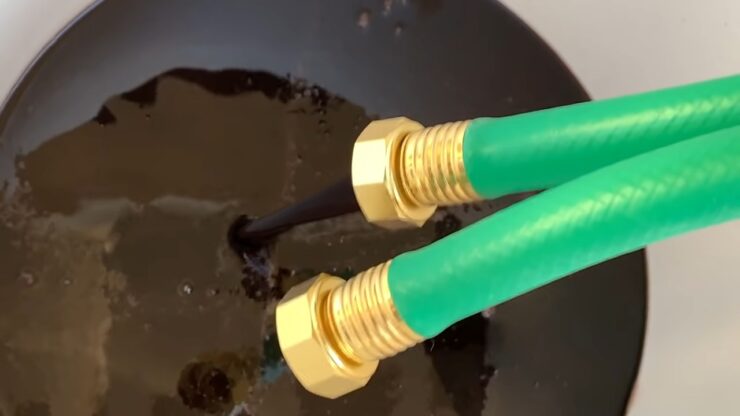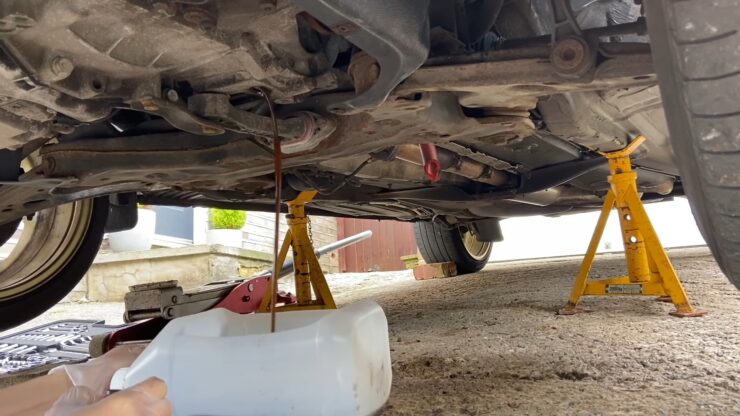Owners of automobiles understand the different mechanisms in trucks and cars. Transmission flush and its importance goes overlooked until your car breaks down on a public road where you brawl for help. It also shows that you’re lagging in car care. Hence acquiring knowledge on, “how often do you need a transmission flush?” stays essential.
Flushing fluids works wonders if checked on time, similar to a car’s health process and averts maintenance method. Arming knowledge about transmission flush also periodically following it reaps ample benefits. Sneak a peek about essential details of Transmission flush plus the need for a fluid flush.
Transmission flush
As miles add up, your automobile may perhaps run through various services for better drivability and lifespan. Hence, the transmission flush stays essential in the list that needs attention. Long car drives without transmission fluids change tend to develop heat plus break-down within as the components erode against each other. Hence getting to know how often you need a transmission flush is vital.
The transmission flush technique stays a systematic process for escalated preservation. Moreover, it eradicates complete oil and adds new oil by means of a distinctive machine. However, an extraordinary device pulls out slurry and filth and loads fresh oil. Slurry plus debris flush out with the above technique flush by swapping new oil.
Transmission flush intervals
The transmission system directs appropriate power towards the wheels of automobiles for a smooth drive. Shifting gears work tremendously along with the transmission system by holding hands using the fluid. For better maintenance and optimum performance, accurate transmission system maintenance is essential.
Henceforth, associating with technicians for transmission flush helps you hit the jackpot in car maintenance. Maintaining transmission fluids at a certain level supports better lubrication of the automobile parts. Periodic transmission flush is imperative for high speed car driving enthusiasts. Convenient transmission flushes win the owner copious benefits averting transmission failure. It would be great to do transmission flush by partnering with automobile technicians.
Signs That Indicate The Need For Transmission Flush
Glimpse the manual
Peeking into the owner’s manual is a smart way to know the period of a transmission flush. 30,000 to 50,000 miles is labeled as the usual reading for a transmission flush. Few recommendations suggest 25,000 miles to 1,00,000 miles, but refraining from transmission flush for more than 60,000 miles concludes that you are inviting trouble.
Running through the manual is the best thumb rule as it holds necessary details such as the maintenance period for the better functioning of automobiles. Moreover, the manual delivers vital information such as particular fluid requirements. Using inappropriate fluids result in drivability hassles plus costly transmission replacements.
Observing the fluid

Deciding the transmission flushes’ need by eyeing transmission liquid turns out to be a fool’s errand. State-of-the-art automatic transmission liquid arises in green, blue, or transparent colors.
There are more chances to fall on your sword by eyeing the fluid’s color.
Inspecting fluid levels
In-depth fluid level examination indicates inevitability for transmission liquid. Manufacturers use the dipstick to know the fluid range. Technicians highly recommend eyeing fluid levels by igniting the car engine with emergency brakes. The solid reason for such a process is automatic transmission fluids levels illustrate an accurate range with warm fluid.
Signs to know transmission flush requisite
Transmission flush plays its role every two years, otherwise every 30,000 miles. People driving hell for leather should be aware that transmission flush at times pre-pones its process. It’s the phase to guard automobiles’ transmission systems by observing a few signs for a transmission flush.
Weird sounds or transmission crunching
As you speed up by pedaling the accelerator, weird noises; otherwise, transmission grinding raises a red flag for transmission fluid checks. Survey the fluid’s color to be red and not black or brown as they could be slush or filth. An acceptable fluid level detects that automobiles necessitate transmission flush.
Slippery feel in gears
The hydraulic power loses intensity with the dirty transmission, parallel to insufficient transmission fluid. The transmission system with flawless pressure helps in perfect gearing. Unclean transmission hinders fluid flow. Though your automobile holds a filled fluid level, pollutants and filth restrict flow demanding a transmission flush.
Unstable gear annoyances

A successful automobile transmission system works beyond expectation through clean transmission fluid. Slurry plus filthy transmission deliver a slothful transmission routine, resulting in trouble in gear shifting. Changing gears becomes a challenge with dirt-filled transmission leads to a transmission flush.
Vehicle movement pause
Another strong reason that highlights the necessity for transmission flush is an overdue movement. After gear shift, a pause for seconds, after which the automobile moves. Such scenarios alert the car owners about transmission flush.
Surging of automobiles
Has your car ever surged often? Such signs indicate polluted transmission plus highlight the necessity for a transmission flush. Dirty transmission blocks the sufficient flow of transmission fluid.
In such circumstances, the car jumps plus rushes frontward plus moves backward without valid reasons.
The transmission fluid flow varies with filth then slush. The vehicle lacks even working components and gears in the transmission system. With such surging indications, the car owners need to associate with technicians for a transmission flush.
How to Troubleshoot Your Transmission
If you’re experiencing problems with your vehicle’s transmission, it’s important to diagnose and address the issue as soon as possible. Here are some steps you can take to troubleshoot your transmission:
- Check the transmission fluid level: Low or dirty transmission fluid can cause a variety of transmission issues, including slipping, shifting problems, and overheating. Check your vehicle’s owner’s manual for the proper way to check the transmission fluid level, and top off or replace the fluid as needed.
- Look for leaks: Leaking transmission fluid can also cause problems, as low fluid levels can lead to transmission damage. Look under your vehicle for any signs of leaks, such as dark red or brown fluid or a puddle of fluid under the vehicle. If you find a leak, take your vehicle to a mechanic as soon as possible.
- Listen for unusual noises: Grinding, whining, or clunking noises while shifting or driving can indicate transmission problems. Pay attention to any unusual sounds and take note of when they occur (e.g. while accelerating, shifting gears, or slowing down).
- Check for slipping: If your transmission is slipping, you may notice the engine revving but the vehicle not moving as quickly or smoothly as it should. This can be caused by low fluid levels, a worn clutch, or other transmission issues.
- Look for warning lights: If your vehicle’s check engine light or transmission warning light is on, it’s important to have the issue diagnosed by a mechanic as soon as possible. These warning lights can indicate a variety of transmission problems, from low fluid levels to more serious issues like a failing solenoid or clutch.
- Take your vehicle to a mechanic: If you’re experiencing transmission problems that you can’t diagnose or fix yourself, take your vehicle to a mechanic who specializes in transmissions. They can diagnose the issue and provide recommendations for repair or replacement.
Remember, regular maintenance and care of your vehicle’s transmission can help prevent issues from occurring in the first place. Follow the manufacturer’s recommended maintenance schedule and take your vehicle to a mechanic for regular inspections and fluid changes.
FAQ
Do vehicles need transmission flush?
Transmission flushes are a controversial topic in the automotive industry, with varying opinions among experts. Some manufacturers recommend regular transmission flushes, while others advise against them.
Generally, a transmission flush is not necessary as long as the transmission is regularly maintained with fluid changes according to the manufacturer’s recommended schedule.
However, in some cases, a transmission flush may be necessary if there is a significant buildup of debris or contaminants in the transmission fluid that cannot be removed through a simple fluid change. It is important to consult with a trusted mechanic or follow the manufacturer’s recommendations for transmission maintenance.
What happens during transmission flush?
During a transmission flush, the old transmission fluid is completely removed from the transmission system and replaced with fresh fluid. This process typically involves the use of a specialized machine that pumps new fluid through the transmission while simultaneously removing the old fluid.
The old fluid is usually collected in a waste reservoir and disposed of properly.
Does the vehicle perform better after transmission flush?
A transmission flush can improve the performance of a vehicle’s transmission in some cases. Over time, debris and contaminants can accumulate in the transmission fluid, which can lead to sluggish shifting, slipping, and other issues.
A transmission flush can remove these contaminants and replenish the fluid, which can help to restore smooth shifting and optimal performance. However, it’s important to note that a transmission flush may not always solve underlying transmission problems, such as worn-out components or mechanical issues.
It’s best to consult with a professional mechanic to diagnose and address any significant issues with the transmission.
Conclusion
Transmission flush contributes to the automobile as well as the owner tremendous benefits and adds life to the automobile. The flush procedure helps eradicate varnish, gum, dirt, besides sludge.
Unclean oxidized fluids in addition to unsafe deposits flush out with the above method.
Moreover, transmission flush declines heat and escalates shifting healthier. The best fact about transmission flush is it enhances the transmission system’s life and helps you avoid burning holes in the owner’s pocket. Hence timely transmission flush renders exceptional routine plus life to the automobiles.
Related Posts:
- Keyless Entry System Installation Instructions -…
- Common Lexus RX300 Transmission Problems with Easy…
- Toyota Cars You Can Rent While You Are in Abu Dhabi
- 2020 Toyota Highlander Trim Levels: Which One Is…
- Difference Between 255 and 265 Tires - Which One…
- Difference Between 275 and 305 Tires - Know Which is…













